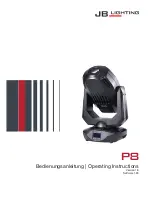
8
Note:
· Should there be any difficulties when removing the intramedullary system because of an obstructing metaphyseal sleeve, this can be reamed with the
tip of the sleeve inserter/extractor and it can be released by tapping it outwards.
· It is recommended to insert the parallel pins on the first line of pins, using at least three pins and one oblique pin to ensure effective fixation.
· It is recommended that you first put in place the pins at both ends, so that the central pins do not impede the removal of the intramedullary compo-
nents and then, once the intramedullary system components have been removed (diaphyseal reamer and metaphyseal sleeve), install the central pins.
· The parallel pins can be kept, by way of a reference point, to make it possible to make the 2 mm recut.
· If after removing the pins we want to recover this reference point, it is recommended to put back the cutting guide by inserting the probe hook through
the corresponding cutting slot, supporting it on the resected surface and making use of the drill holes which have already been made in order to reinsert
the pins and thus fix the cutting guide in the right position. For greater accuracy when putting back the cutting guide it is recommended to perform the
above action by reassembling the extramedullary telescopic system on the intramedullary system.
1.4 Measuring of the tibial tray
After making the cut, when placing the trial templates on the tibial cut, select the size which best suits the bone morphometry of the tibial cut which
has been made.
Trial tibial template
Support handle
Surgical Technique
Set 1. Upper tray
Summary of Contents for Genutech CCK
Page 1: ...Surgical Technique Genutech CCK total knee revision system ...
Page 2: ......
Page 36: ...34 FEMUR Insertion of 70 mm stems in femur F 70 F 70 Surgical Technique ...
Page 37: ...35 Insertion of 70 mm stems in the femur greater intramedullary stability F 70 120 200 F 70 ...
Page 38: ...36 Insertion of 120 mm stems in femur F 120 F 120 Surgical Technique ...
Page 55: ......











































